Cuzco, Peru – Our last full day in Cuzco dawned bright and early… well, I guess dawn probably came at roughly the normal time, but we were up early, and eagerly awaiting Yony’s arrival. After a little coffee and toast, the three of us trooped out to the street where she hailed the first cab that came our way and asked the driver if he was available to spend a few hours with us touring outside the city. They haggled a little and settled on forty soles to spend 4-5 hours with us. We got in, and then she remembered to ask Adrian, our driver, if he knew where Pikillacta and Tipón were… he didn’t, or more or less vaguely in “that direction”… she sighed and started giving directions. This, by the way, is one thing we noted back in Puno and in Cuzco – folks live out their lives in the shadow of some of the most important historical sites of their own cultures and have only the barest idea that these things even exist, let alone where they are. I realize that in a society where a large percentage of people live below the poverty line, visiting an archaeological ruin is not top priority, but at the same time, Peru does have public education, and one would think that their own history would have been part of that… but I guess field trips are not necessarily included…
Pikillacta is not a far drive from Cuzco, and it was only about half an hour before we arrived. It’s the site of a pre-Incan (Wari culture) walled city that encompasses a 25 square kilometer area, or about 10 square miles. We visited the central part of it, which is both the best preserved and the best studied at this point. Much of the ruins are still under excavation by archaeologists and historians and aren’t yet accessible. In the accessible part, if one wanted to spend the entire day, are administrative and religious centers, somewhere around 500 homes, and about 200 “commercial” or storage facilities. One of the most interesting features is along the back wall of the town where the remains of a main avenue runs off in both directions to the far ends of the town center, including a pedestrian bridge that goes over a former canal that you can see in the second photo. Among other interesting features – the Wari were using mud-based mortar to hold stones together and seal buildings from drafts before the Incas came along – the Incas, if you remember some of my earlier posts, didn’t use mortar, they used stones with concave and convex sides fitted together – they actually began using mortar after “absorbing” the Wari into their empire. Many of the homes and other buildings in Pikillacta were 2 or 3 stories in height, unusual for the time period when most other cultures only had single level structures.
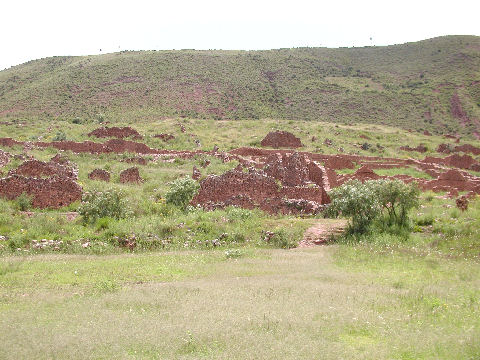
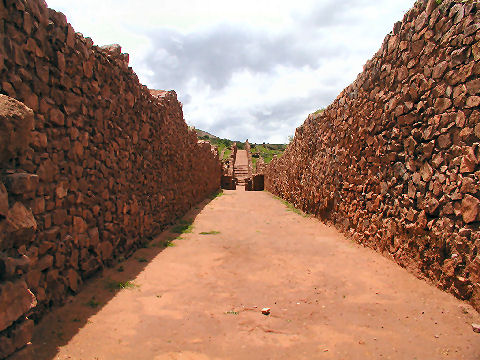
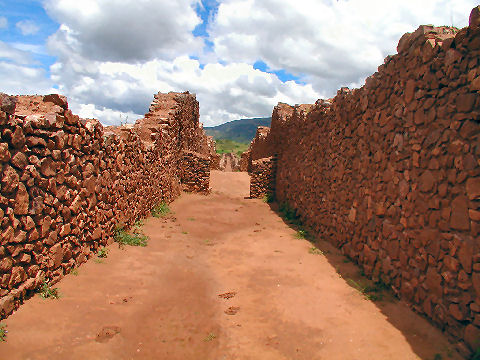
We spent about an hour or a bit more exploring Pikillacta and then rejoined Adrian in the taxi. From there, we headed off to Tipón, which for me has to have been the most intriguing and suprising site we visited all week. Tipón is a waterworks. It’s literally an underground system of hydraulic engineering and irrigation that dates back to the early part of the Incan empire. Water is piped in via underground springs from glaciers that are on the other side of surrounding mountains, pumped up to the top of the site, and then spill down via an intricate network of waterways over a terraced garden. The garden was apparently an experimental garden of sorts for the Incas, based on whatever evidence has been uncovered, it appears that it was used for things like exploring what levels of water produced optimum crop yields, and for planting and sampling crops that were gathered from the far reaches of the empire. There is apparently also some evidence that the various plants that were brought back, sometimes from hundreds of miles away, were then experimented with in the production of medicines, dyes, and other products. The waterworks are still active today, after nearly 600 years of continuously flowing… and, according to Yony (and a quick internet search confirms this), they are such a masterful use of hydraulic engineering techniques that they’re actually studied by hydraulic engineers today as part of their training! Tipón is also, as a side note, one of the prime spots worldwide for ceremonies that relate to the moon, especially for various sects of Wiccan culture – and there’s even a process in place for folks who worship the moon to apply to the historical parks department for a permit to spend the night there.
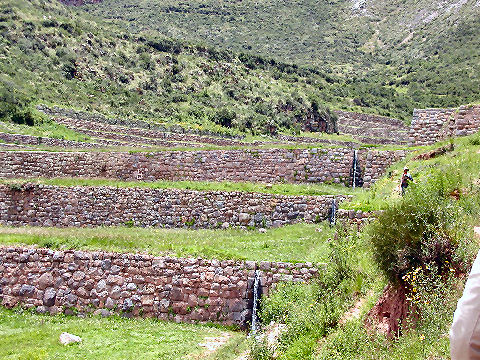
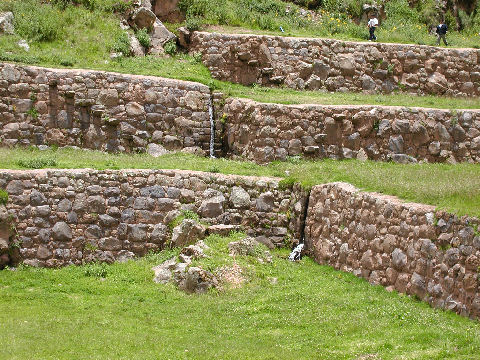
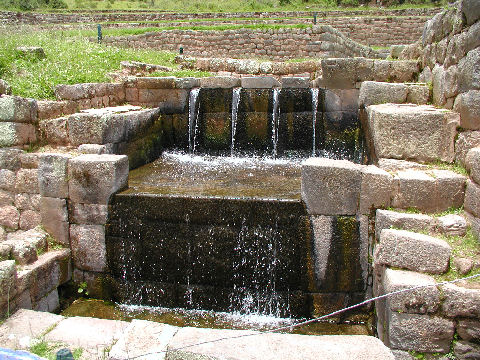
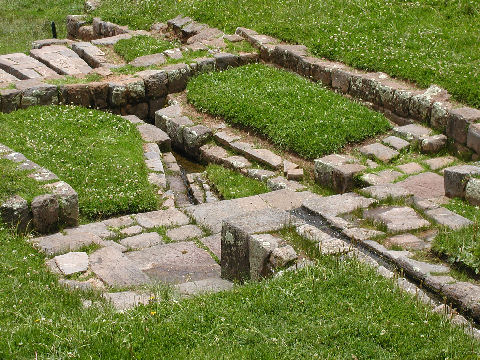
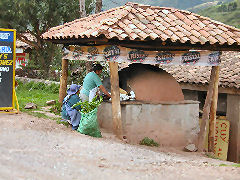 It almost seems a letdown to talk about food after these two amazing archaeological sites, but I’m going to anyway. Each site has a small town near it that are just designed with the itinerant foodie in mind. The town of Tipón is known for its cuyerias, or roast cuy (guinea pig) restaurants. They literally line the streets, and vie with each other for the passing traveler to stop and sample their wares. Yony had something else in mind for us (in retrospect I wish we’d insisted as it would have been something more out of the ordinary), so we merely passed by dozens of women who were busily roasting cuy in these domed wood or charcoal fired ovens, each following their own recipe. This woman appeared to be stuffing them with either laurel (bay leaves) or coca leaves, from a distance it was hard to tell.
It almost seems a letdown to talk about food after these two amazing archaeological sites, but I’m going to anyway. Each site has a small town near it that are just designed with the itinerant foodie in mind. The town of Tipón is known for its cuyerias, or roast cuy (guinea pig) restaurants. They literally line the streets, and vie with each other for the passing traveler to stop and sample their wares. Yony had something else in mind for us (in retrospect I wish we’d insisted as it would have been something more out of the ordinary), so we merely passed by dozens of women who were busily roasting cuy in these domed wood or charcoal fired ovens, each following their own recipe. This woman appeared to be stuffing them with either laurel (bay leaves) or coca leaves, from a distance it was hard to tell.
We were headed back closer to Pikillacta and the town of Saylla, which is famous for its chicharronerias, or small restaurants that serve chicharron… which is ostensibly fried any sort of meat, but in the case of this town, pork. We went to Yony’s personal favorite, aptly named Chicharroneria Saylla, and after ordering four plates (Adrian needed to eat too, even if it wasn’t part of the negotiation, and believe me, both he and Yony seemed completely shocked that we’d include him – not in a bad way, just surprised) of chicharrón, sat down at a table in the garden where we nibbled on, well, pork cracklin’s while we waited for heaping plates of absolutely delicious fried pork, potatoes, yuca, mote (large boiled corn kernels) accompanied by fiery chili sauce, onions, and leaves of local mint. We even ordered a fifth plate to share…
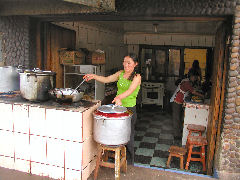
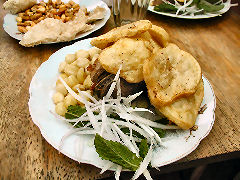
In the morning, our final day, we really just had a few hours. The only site remaining on our tourist boletos that was close enough to make use of was to return to Q’oricancha and visit the museum onsite. Yony agreed to join us for a quick tour of the facility – it’s really just four small rooms of information about the site and artifacts found in the catacombs beneath the church. Interesting but not overly exciting. We chatted a bit with Yony, thanked her for the past three days, headed back to the hotel and packed. We had just time for lunch before heading to the airport, so we returned around the corner to Pacha Mama and ordered another bowl of the excellent minestron, a vegetable, pasta, and chicken packed soup flavored with lots of cilantro; and a causa, packed with tuna, onions, and all sorts of good flavors – different in subtle ways from causas I’ve tried before, but still familiar – enough to get some ideas for future versions.
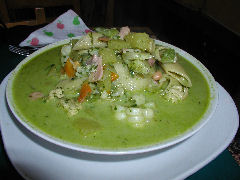
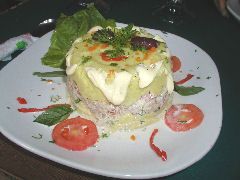
I am envious of you both and this trip. Of course, those women roasting cuy in the streets are all certified by the local health board, right?
Health Board? You’ve spent too much of your life in the U.S….